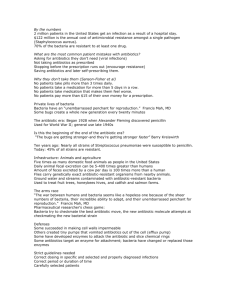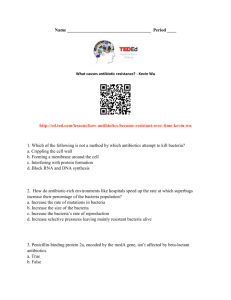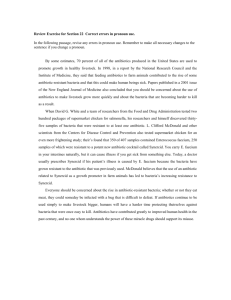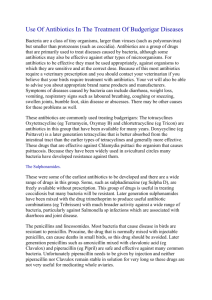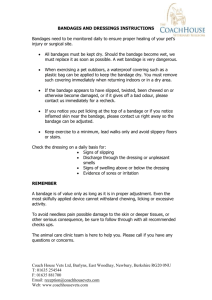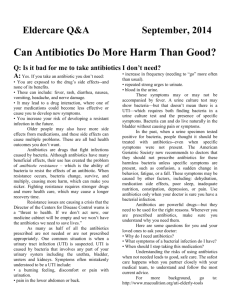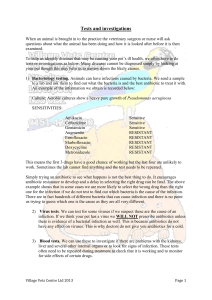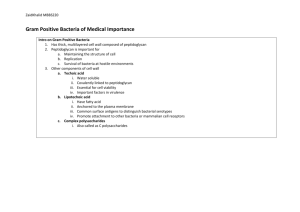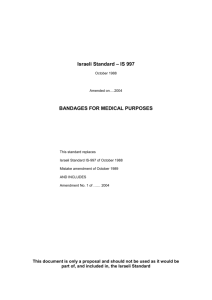A `smart` bandage which illuminates as it releases bug
advertisement
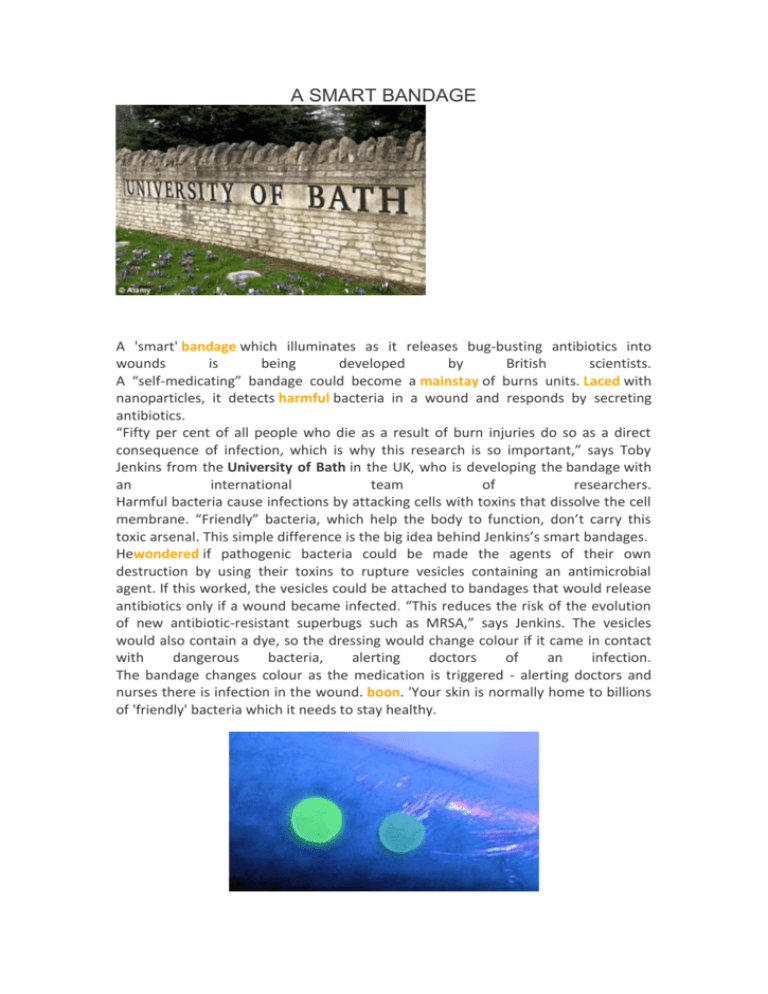
A SMART BANDAGE A 'smart' bandage which illuminates as it releases bug-busting antibiotics into wounds is being developed by British scientists. A “self-medicating” bandage could become a mainstay of burns units. Laced with nanoparticles, it detects harmful bacteria in a wound and responds by secreting antibiotics. “Fifty per cent of all people who die as a result of burn injuries do so as a direct consequence of infection, which is why this research is so important,” says Toby Jenkins from the University of Bath in the UK, who is developing the bandage with an international team of researchers. Harmful bacteria cause infections by attacking cells with toxins that dissolve the cell membrane. “Friendly” bacteria, which help the body to function, don’t carry this toxic arsenal. This simple difference is the big idea behind Jenkins’s smart bandages. Hewondered if pathogenic bacteria could be made the agents of their own destruction by using their toxins to rupture vesicles containing an antimicrobial agent. If this worked, the vesicles could be attached to bandages that would release antibiotics only if a wound became infected. “This reduces the risk of the evolution of new antibiotic-resistant superbugs such as MRSA,” says Jenkins. The vesicles would also contain a dye, so the dressing would change colour if it came in contact with dangerous bacteria, alerting doctors of an infection. The bandage changes colour as the medication is triggered - alerting doctors and nurses there is infection in the wound. boon. 'Your skin is normally home to billions of 'friendly' bacteria which it needs to stay healthy. The dressing could be also used for treating burns, ulcers or soldiers injured in action. Project leader Dr Toby Jenkins of Bath University said: 'If this was available right now it would be extremely useful for our soldiers in Afghanistan. 'Being injured in the desert or the battlefield makes them extremely prone to infection so such a dressing for their wounds would be a tremendous The dressing is only triggered by disease-causing bacteria which produce toxins that break open capsules containing the antibiotics and dye which makes it take on a green hue. 'This means antibiotics are only released when needed which reduces the risk of the evolution of new antibiotic-resistant super-bugs such as MRSA. 'We are making a prototype at the moment and hope we could start clinical testing in about three years.'



